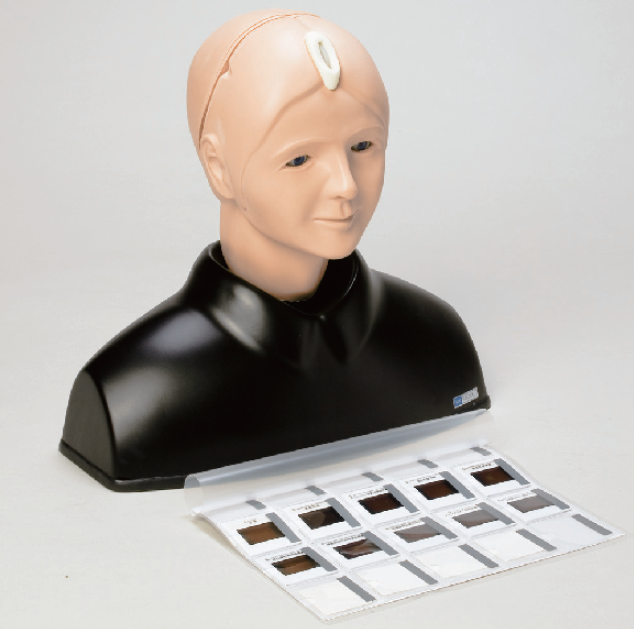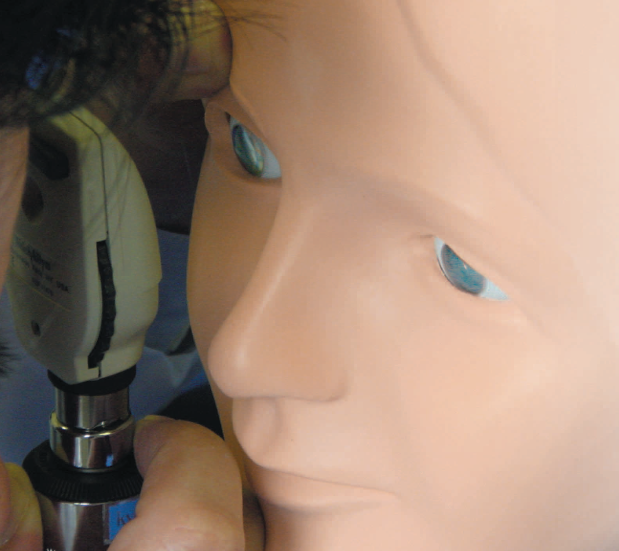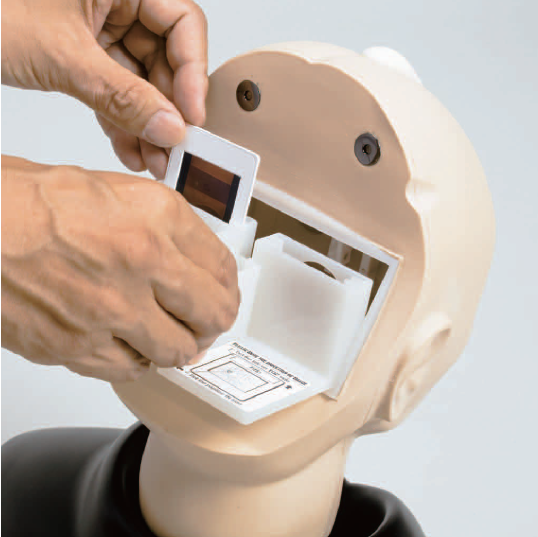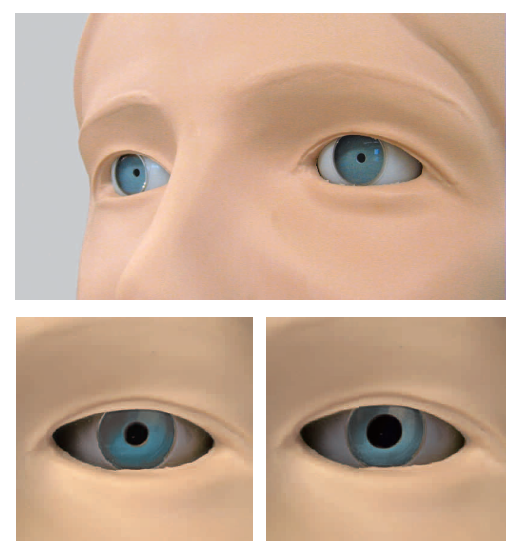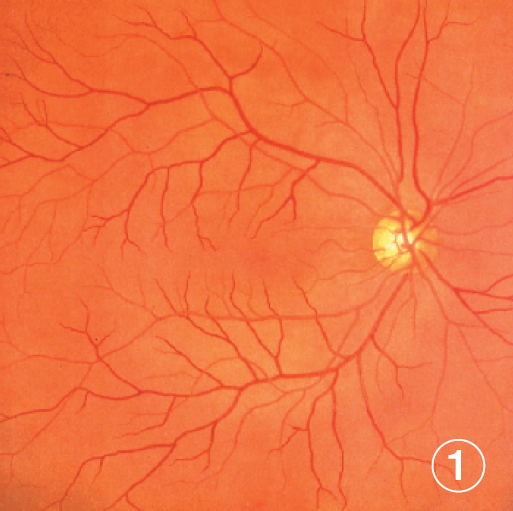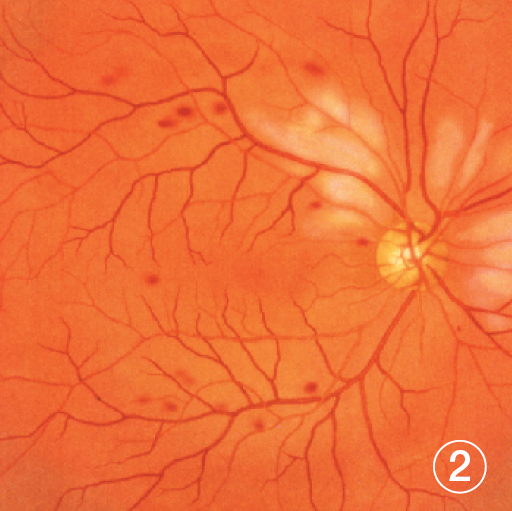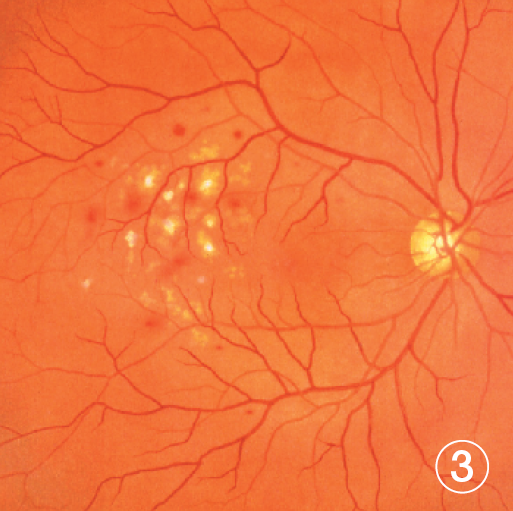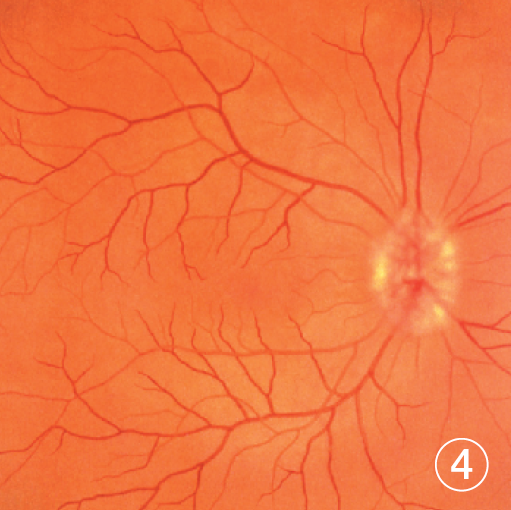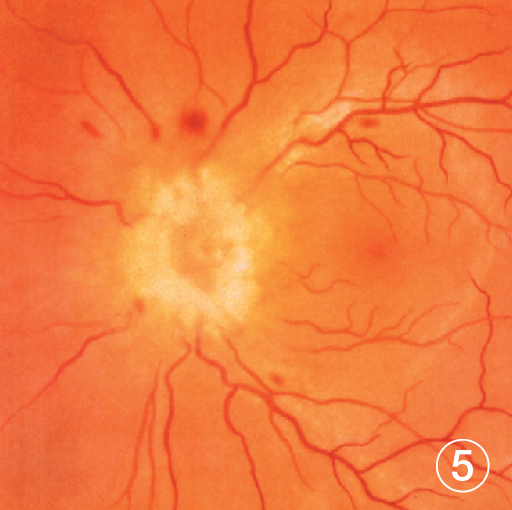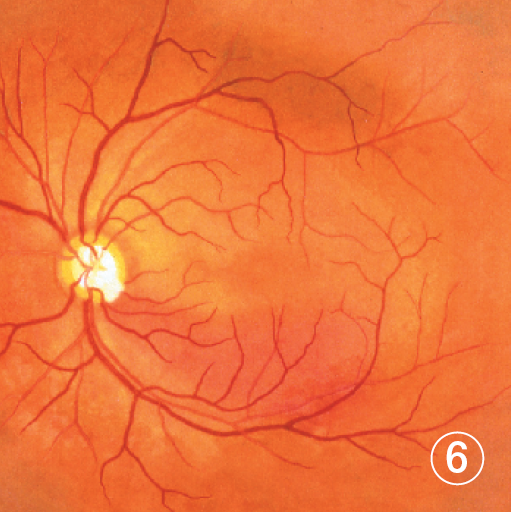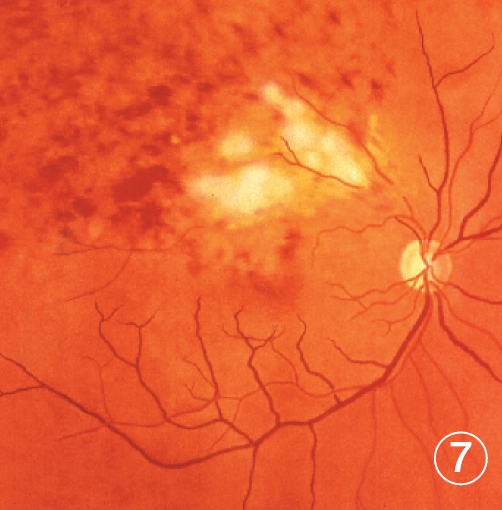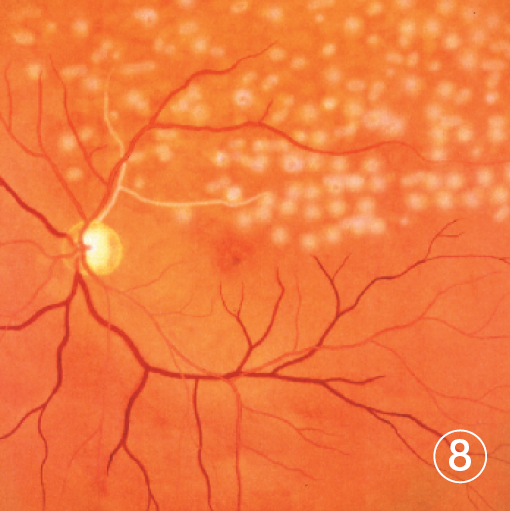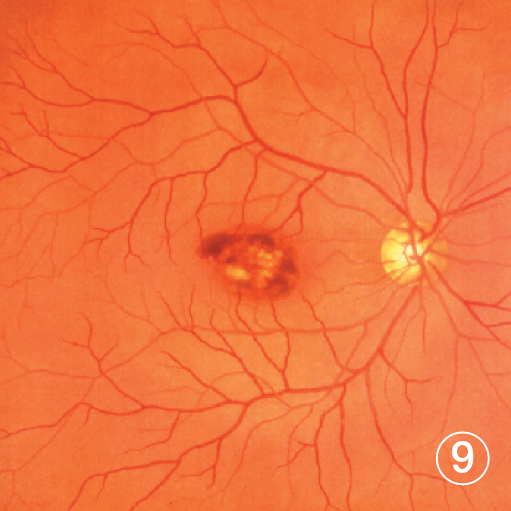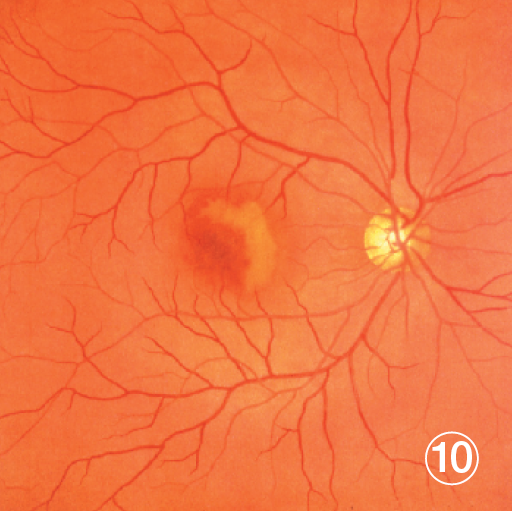- Suitable for training with all types of direct ophthalmoscopes. The lens-equipped eyeball units reproduce the visual axis close to that of the human eye providing a realistic eye-ground view.
- When the instrument is used improperly, the ocular fundus will not be observed clearly.
- Pupil diameter can be changed.
- The depth of the fundus slides can be set in 3 steps, showing differences between hyperopic, normal and myopic views.
- Red reflex can be seen.
- 10 cases of fundus slides are provided for training in common eye disease identification. The slides were processed from actual clinical images in order to reproduce appropriate representative views in the eye unit.
- Soft and supple manikin material allows hands-on practice of examination procedures, such as raising the eyelid.
Slides (set of 10)
- Normal eye-ground
- Hypertensive retinopathy: arteriolar vasoconstriction grade 3, arteriolosclerosis grade 1, hemorrhages and cotton wool spots, simple vein concealment.
- Simple/background diabetic retinopathy: microaneurysm, hemorrhages and hard exudates
- Papilloedema (chronic phase)
- Papilloedema (acute phase)
- Glaucomatous optic atrophy: glaucomatous optic disc cupping and nerve fiber defect
- Retinal vein occlusion (acute phase): flame-shaped hemorrhage and cotton wool spots
- Retinal vein occlusion (after retinal laser photocoagulation)
- Toxoplasmosis: retinochoroiditis
- Age-related macular degeneration: macular exudates and subretinal hemorrhage
Set Components:
1 manikin head and shoulder
1 pupil switch : 3 steps (2, 3.5 and 5mm diameter)
1 Slide holder with 3 step depth setting
1 set of case slides (10 cases)
1 slide duster
1 carrying case
The EYE Examination Simulator is an innovative trainer for fundus examination, designed to allow examination of eyegrounds with the physician's own ophthalmoscope.

